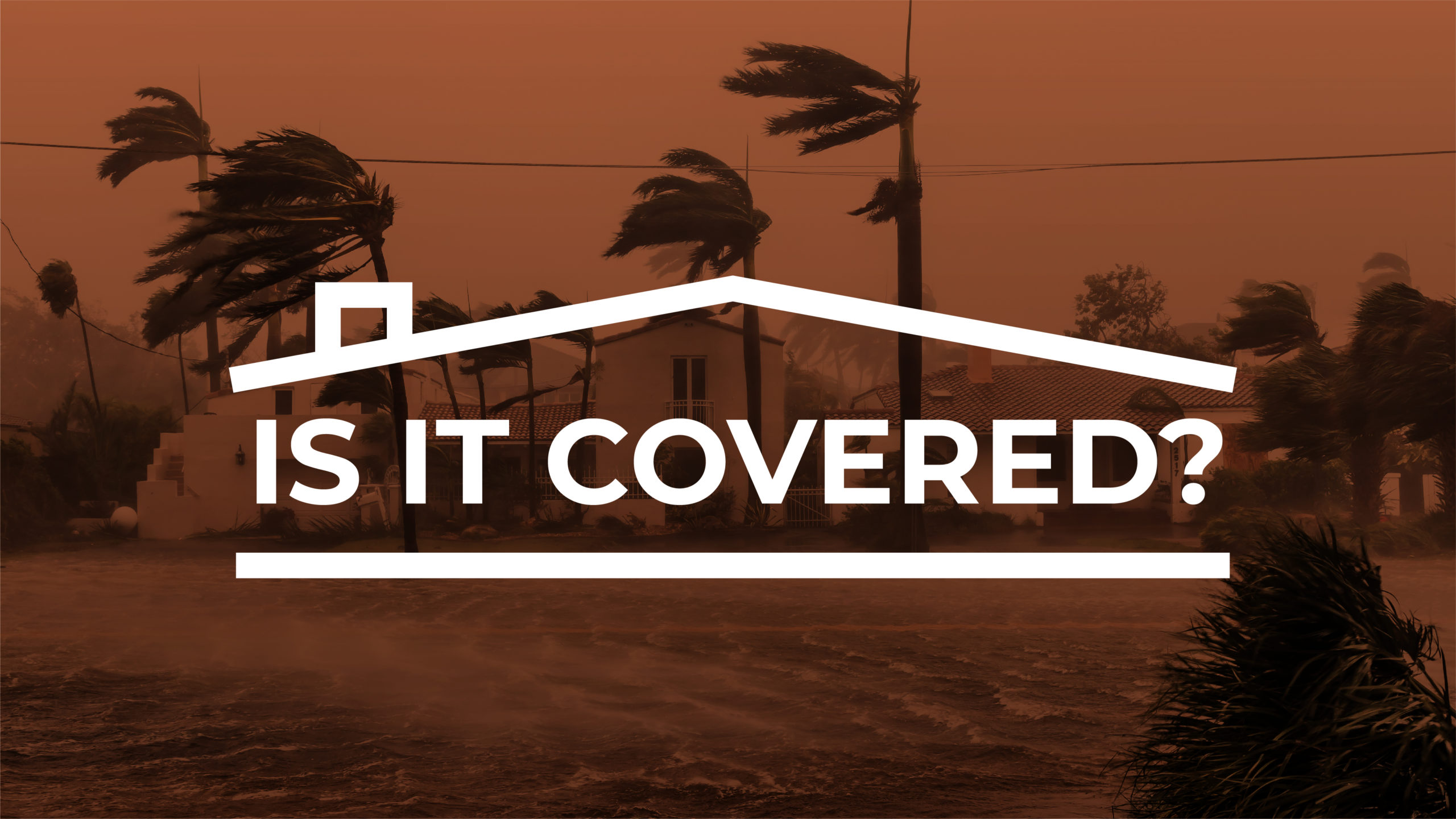If your investor clients have properties in coastal locations, it might not always be clear if they have coverage when a tropical storm or hurricane passes through. Damage may occur because of the force of winds, rain driven by those winds, storm surge, and flooding. Some carriers get very specific about separating these coverages versus covering damage occurring in one storm event under the Named Storm peril. Carriers usually draw their own lines as to what qualifies as “coastal”, often referred to in policies as “Tier 1” or “Tier 2”. Some carriers draw their coverage lines according to counties, while others use a certain distance from the coast. Still, others may use a combination of both.
What constitutes a “Named Storm”?
A sample policy definition may look like the following:
“A named tropical storm or hurricane means a storm system that has been identified and named a tropical storm or hurricane by the National Hurricane Center of the National Weather Service. For purposes of this exclusion the duration of such a tropical storm or hurricane shall be deemed to include the period during which the tropical storm or hurricane conditions exist and the 72 hours following the termination of the final tropical storm or hurricane watch or warning issued by the National Hurricane Center of the National Weather Service, with respect to such system.”
*As insurance policies may vary, investors should check their own policy for language specific to the covered property.
Can you explain “Tier 1” and “Tier 2”?
Tier 1 and 2 areas usually start at the tip of Texas, snake around the Gulf of Mexico and Florida, and continue up the Eastern Seaboard. In other words, the Pacific Coast is usually left out of the Tier system. Tier 1 areas are typically the counties right along the coastline, while Tier 2 are typically the counties located one more county in from the coastline. That stated some carriers will define Tier 1 to extend a certain number of miles inland from the coast and Tier 2 yet another specified amount of miles beyond Tier 1 inland. As you can imagine, your investor client needs to know what tier their property sits in and how coverage is affected in that tier.
What types of damage could be excluded?
As mentioned earlier, some carriers separate coverage between damage caused by storm surges, wind, or flooding. For damage from inland flooding to be covered, the investor client must still purchase a separate Flood policy.
What happens if the investor doesn’t have “Named Storm” included in their policy?
If your investor client is in an area where their property policy excludes coverage for Named Storm, such as in Tier 1 or Tier 2, they will need to purchase additional coverage. Catastrophic coverage like Named Storm can be vitally important as the damage can be some of the costliest property damage they may experience. To put it simply, your investor client could lose their entire investment.
Is there a way to add coverage for “Named Storm,” without additional cost?
Depending on the carrier and policy, Named Storm coverage may be added or set up as a separate policy specifically for that peril. Within the REInsurePro program, some policies include Named Storm, or exclude it. Adding Named Storm does typically increase the premium significantly as most catastrophic coverages (Flood, Earthquake, etc.) do.
What does the technical lingo for this exclusion look like in the investor client’s policy?
Sample policy language may look like this:
Named Storm Exclusion
“We will not pay for loss, damage or expense caused directly or indirectly by or resulting from a named tropical storm or hurricane to a property located in a county listed above. Such loss, damage, and expense are excluded regardless of any other cause or event that contributes to or aggravates the loss, damage, or expense, whether concurrently or in any sequence to the loss.”
The policy may then specify a list of counties that define Tier 1 and Tier 2 areas or may state something similar:
“Named Storm is excluded in Tier 1 and 2 in Texas and within 100 miles of the coast of Louisiana, Alabama, and Mississippi. Named Storm is excluded in Florida. Named Storm is excluded 25 miles from the coast in Georgia, South Carolina, North Carolina, Virginia, Maryland, Delaware, New Jersey, and New York. Named Storm is excluded 1 mile from the coast of Rhode Island, Massachusetts, New Hampshire, and Maine.”
Windstorm or Hail Exclusion
“We will not pay for loss, damage, or expenses caused by or resulting from:
- Windstorm or hail regardless of any other cause or event that contributes concurrently or in any sequence to the loss or damage; or
- Rain, snow, sand, or dust, whether driven by wind or not, if the loss or damage would not have occurred but for the windstorm or hail.
But if windstorm or hail results in a cause of loss other than rain, snow, sand, or dust, and that resulting cause of loss is a Covered Cause of Loss, we will pay for the loss or damage caused by such Covered Cause of Loss. For example, if the windstorm or hail damages a heating system and fire results, the loss or damage attributable to the fire is covered subject to any other applicable policy provisions.” (This type of exclusion language may be followed by a list of affected areas or counties.)
*As insurance policies may vary, investors should check their own policy for language specific to the covered property.
What can this type of damage cost the investor?
All catastrophic events have the potential to destroy a property and cause severe or fatal injuries. Your investor client may be lucky and have little damage from a Named Storm, or they could suffer a total loss of their investment.
How can investors protect themselves?
First, they should know what is in their policy: Your investor clients must read the sections of their insurance policy that address Water, Wind/Hail, and Named Storm. It is important that investors know both what they are and are not covered for. If you and your investor client don’t understand something or have questions, don’t hesitate to contact your Sales Manager, who would be happy to help!
Investors should ensure that any remodeling meets current code: If your investor client makes any improvements to their property, they must be done up to current code standards regarding Wind/Hail and Named Storm. States that experience a frequent occurrence of Named Storms, such as Florida, typically have specific building standards to help a building better sustain the increased wind speeds acting upon that building in a catastrophic storm.
Investors should give tenants information about storm safety: Investors may not always rent to a native of the state, and though they may be familiar with a greater frequency of Named Storms, they may not know how to plan for an emergency. As a part of the welcome packet, investors may want to include information about how to make an emergency kit and resources to find safe shelter and first aid during a catastrophic event.
The investor’s tenants must understand that their personal property isn’t covered by the landlord’s insurance: The investor client should include a clause in the lease requiring tenants to carry renters insurance and make sure it is enforced. Investors should inform tenants that insurance carried on the property does not apply to their personal belongings. Tenants must understand the importance of reporting any hazardous conditions on the property to the investor or the property manager immediately. Investors may want to include a section in the lease where the tenant acknowledges their understanding of these items. Your investor client may also choose to purchase a product like our Tenant Protector Plan that does provide content coverage for tenants.





